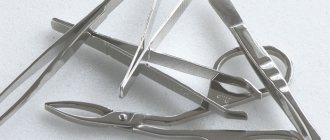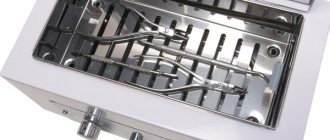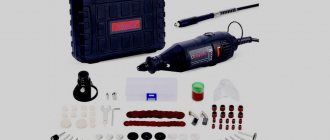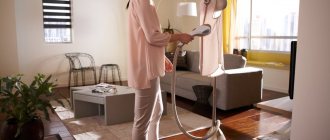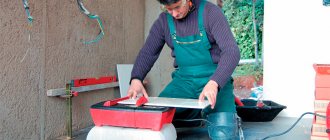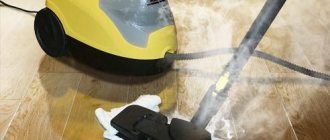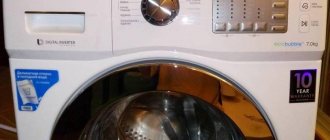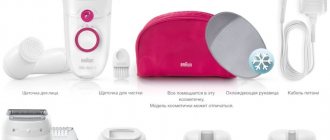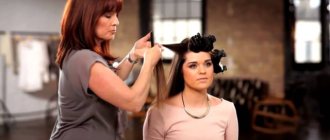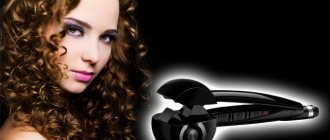Pros of a ball sterilizer
Glasperlene sterilizer has many undoubted advantages, among which are:
- reliable impact on the surface of the tool;
- processing speed: 10-20 seconds;
- incredible efficiency: destruction of all possible bacteria, including gram-positive and gram-negative, fungi, viruses (herpes, HIV, hepatitis);
- careful and delicate cleaning of the instrument - it remains safe and sound;
- low power consumption, energy saving;
- the ability to work for a very long time without interruption - this is important when there is a large flow of clients;
- compactness of the device and, as a result, its mobility;
- modern design;
- acceptable prices.
Steam sterilizers (Autoclaves)
The sterilizing agent is saturated water steam under excess pressure.
Sterilization occurs due to exposure to steam and high temperature (from 121 to 134°C, pressure 1.1-2.1 kgf/cm2). The full sterilization cycle (heating-preliminary air removal-sterilization-drying) takes about 25-50 minutes (depending on the type of steam sterilizers and the selected sterilization mode). Distilled water is used.
The advantage of steam sterilizers is the ability to process almost any product and manicure tools. The steam method sterilizes products made from corrosion-resistant metals, glass, textile products (132-134°C), and at a temperature of 120°C, products made from rubber, latex, and certain types of plastics.
There are 3 classes of autoclaves. For sterilization in a beauty salon and similar establishments, only class “B” and “S” autoclaves are allowed to be used.
Class "B". They perform three functions: pre-vacuumization, sterilization and vacuum drying. They can sterilize instruments and accessories of various types, even porous ones, with cavities, and complex shapes.
Class "S". These devices are simpler than the previous ones. They are suitable if you need to process tools of a simpler shape: non-porous, without cavities, and others. If in class “B” the evacuation is fractional, i.e. gradual, then in class “S” it is single. Therefore, the second option is cheaper.
Class "N" (the simplest option). These autoclaves can only sterilize products without packaging. Moreover, they must have a smooth surface without cracks, etc. This type of autoclaves does not support the options of preliminary vacuumization and vacuum drying. Some models are equipped with an additional drying function.
For processing in steam sterilizers, paper or combined sterilization packaging is used as packaging. Combined packages (paper/film) are transparent, cost a little more, but keep instruments sterile for longer.
In order for steam to penetrate well into various points of the sterilization chamber and between products, it is very important to comply with loading standards both for the sterilizer itself and inside the sterilization packages.
In case of violation of loading standards or deviations in the operation of the sterilizer, condensation may appear, which has a corrosive effect on the metal (the appearance of rust).
Sterilization quality control is carried out using chemical indicators (test strips) of classes 4 and 5 (according to GOST ISO 11140-2011).
Using an autoclave requires careful care, otherwise there may be damage to the device and the risk of getting an unsterile instrument. Let's look at the basic rules for caring for an autoclave.
Daily Maintenance
- Clean the sealing gasket of the autoclave door and chamber with a clean damp cloth moistened with distilled water.
Weekly service
- At least once a week, the trays and grid should be removed from the autoclave chamber and cleaned with a disinfectant cleaner. To avoid the accumulation of mineral residues and corrosion on camera parts, use only distilled or demineralized water.
- Once a week you should unscrew the water filter and clean it of dirt.
Monthly service
- Once a month, drain the distilled water tank and rinse it with a recommended disinfectant. After treatment, the tank must be washed several times with distilled water.
Annual Maintenance
- The door seal must be replaced once a year.
- The bactericidal air filter must be replaced at least once a year.
pros
● Relatively short sterilization time. ● Ability to process almost any product. ● Possibility of using packaging for storing sterilized instruments.
Minuses
● Costs more than all other types of thermal sterilizers. ● Works on distilled water. ● Quite demanding in terms of maintenance and care. ●Professional training of personnel with documentary evidence is required (electrical safety and work with pressure vessels). ● Quite bulky.
Who are autoclaves suitable for:
Considering the cost of autoclaves (the simplest and cheapest models cost more than 100,000 rubles), not everyone will be able to afford such a purchase. This option is most suitable for beauty salons, and they will be able to sterilize several sets of instruments in packages in about 1 hour (the quantity depends on the volume of the sterilizer chamber), this is important if there are several specialists and a large flow of clients. Almost any instruments and materials can be sterilized. At the same time, we must not forget that an autoclave is a complex technical device that is under high pressure and requires proper handling: the operating personnel must undergo special training. preparation and have the appropriate documents. The autoclave must also be properly maintained and maintained at all times. When working, only distilled water should be used.
Disadvantages of a ball sterilizer
However, the device also has some disadvantages that are significant for certain masters:
- not too large capacity - this is the flip side of compactness;
- The device cannot process plastic tools, only metal ones;
- The device processes exactly the surface that you place in it. Tool handles, for example, remain uncovered.
Nevertheless, the glasperlene sterilizer still has many more advantages, which is why it can be seen in most nail studios.
Technology of using a ball sterilizer
Another advantage of a ball sterilizer is its ease of use.
Place the device on a flat surface. It comes with balls. Unpack them and fill the tank about two-thirds full. Connect the device to the network and press the power button.
After turning on, wait a certain time (it is written in the instructions) and place the tools in a bowl with balls, cutting sides down. Close the lid. After the time specified in the instructions has passed, the instruments will be completely disinfected. Attention: sterilization of one batch should not exceed 40 seconds!
Advantages of ultrasonic sterilizers
Sterilizers of this type are very common in nail salons due to some advantages compared to similar devices of other operating principles.
- Versatility. Perfect for manicure tools made of different materials - all types of metal, plastic, glass, ceramics.
- Cleaning is completely safe for tools and does not lead to deformation, corrosion or damage to cutting surfaces.
- Speed of sterilization. Even the most contaminated instrument is sterilized in no more than 10 minutes.
- Thanks to the presence of a timer, there is no need to constantly monitor the cleaning process. The device turns off automatically after a specified period of time.
- The sterilizer is extremely easy to clean. The removable stand inside the bath can be easily removed, so it can be washed separately from the device.
- Completely safe to use. Unlike heat treatment, there is no risk of burns.
- You can not only sterilize it, but also store instruments until next use.
All these advantages often force manicurists to give preference to an ultrasonic sterilizer. However, some believe that processing in it is not enough to completely eliminate all bacteria, so they use ultrasound as a preparation for heat treatment. For basic disinfection, quartz sterilizers or dry-heat ovens are then used. But when it comes to cleaning contaminated, hard-to-reach places, it really has no equal. If you are interested in the topic of high-quality sterilization of manicure instruments, then we invite you to watch a very useful video. In it you can get acquainted with some types of devices for high-quality processing of tools.
How to care for a ball sterilizer?
In order for the sterilizer to serve you as long as possible and clean as many instruments as possible, you need to properly care for it:
- clean the case and internal surfaces daily - of course, before doing this you need to unplug the device and wait for it to cool completely;
- Do not disconnect the sterilizer from the network immediately after the disinfection process;
- When cleaning surfaces, do not use aggressive liquids - only mild detergents diluted in the required proportions in water;
- After cleaning, be sure to wipe all treated surfaces with a soft, dry (preferably lint-free) cloth, removing traces of cleaning compounds and moisture.
Well, just in case, keep the instructions close!
What is a manicure UV sterilizer?
Ultraviolet radiation is used to disinfect instruments after working with a client. To do this, all manicure devices are simply placed in a special box of the device, after which it is turned on. The lamp lights up and the disinfection process begins. In total, it takes about 40 minutes to process the tools laid out in one row. Approximately 20 minutes on each side.
The UV sterilizer for manicure tools can have one or two drawers. In addition, the power of such devices also differs. Accordingly, processing time may vary up or down. However, it should be remembered that before sending instruments for sterilization, they should be disinfected with a special agent. This will improve the quality of processing.
How to choose a ball sterilizer
According to the principle of operation, all models are virtually the same. But there are a number of factors that you need to pay attention to when purchasing:
- maximum heating temperature: it is better that it can reach a maximum of 250 degrees;
- case material: it must be made of high-quality plastic or metal;
- stability: the device must be equipped with rubber feet to ensure stability.
And be sure to buy a sterilizer exclusively in a trusted store that sells only high-quality original certified products! Make sure that all documents are included with your purchase.
Methods of disinfection and sterilization of instruments
Depending on the conditions of use of manicure devices, their processing can be minimal, standard or professional. Minimal processing is only permissible at home, while professional processing provides an almost medical level of sterility.
Minimum program - for disinfection at home
This method allows you to save on the purchase of professional sterilizers. In terms of effectiveness, it is inferior to standard and professional treatment, but is considered acceptable for use at home. It is performed according to the following algorithm:
- Disinfection of manicure instruments - performed immediately after the manicure procedure to prevent particles of biomaterials from spreading in space. You need to pour water into a container or box for disinfection and add a special disinfectant, for example, Kon, InstrumDez or Rionol. Cosmetics are immersed in the prepared solution and left for 15–30 minutes.
The solution is made according to the instructions - the amount of the drug recommended by the manufacturer is added to the water using a measuring cup or a disposable syringe. When diluting the concentrate, you need to wear protective gloves and a medical mask to protect your skin and respiratory organs.
- Cleaning. The devices are washed individually using a brush and detergent under running water until all visible dirt is removed, and then wiped with disposable napkins or dried on a wire rack.
- Sterilization. Disinfected and cleaned manicure accessories are placed in sterilization bags , sent to the oven and kept in the oven for 15 minutes at 180 °C. This value must not be exceeded so that the devices do not lose their strength.
- Storage. Treated accessories are stored in closed craft bags until further use. The storage duration can be up to 30 days.
Standard processing
This method is used in beauty salons that do not have an autoclave or dry-heat oven. Its peculiarity lies in the use of a glasperlene (ball) sterilizer and a change in the order of steps: the devices are first sent for storage in a UV chamber, and are sterilized only before direct use.
The algorithm for standard processing of cosmetic accessories looks like this:
- Disinfection and cleaning in an ultrasonic cleaner - 2 procedures at once. The sink bowl is filled with water and disinfectant so that after immersing manicure accessories in it, the MAX level is not exceeded. In this case, the accessories to be cleaned must be completely immersed in water. Small items are placed in a special basket and then in a bowl. After closing the lid, the sink is connected to the power supply, the cleaning time is set to 15 minutes, and disinfection treatment occurs.
Note: In the absence of an ultrasonic cleaner, accessories are disinfected in a disinfection box, followed by rinsing with a washing solution and a brush under running water.
- Washing, drying and checking. At the end of the cleaning session, items are removed from the ultrasonic cleaner, washed and dried. After drying, they are carefully inspected for dirt, chips or scratches.
- Storage in a UV chamber or airtight box until use.
- Sterilization. Before use, the accessories are removed from the UV chamber, and their metal working part is placed in a preheated glasperlene sterilizer. The high temperature treatment process lasts 20 seconds. This time is enough to remove microorganism spores, and the instrument does not have time to experience negative temperature effects.
Maximum program – 100% sterility
Disinfection and sterilization of manicure instruments using this method ensures almost surgical sterility and allows 100% compliance with sanitary and hygienic requirements. The main difference between this method and previous options is the use of a dry-heat oven. Otherwise the technologies are similar:
- Disinfection + pre-sterilization cleaning in an ultrasonic cleaner, as in the standard method.
- Washing, drying and inspection.
- Sterilization. Accessories are placed in craft bags, sealed and processed in a dry-heat oven for 60 minutes at 180 °C. The temperature regime is maintained automatically. There is no need to set a higher temperature so as not to damage the instruments. When the set time has elapsed, a beep will sound and the power will be turned off.
- Storage. Disinfected accessories are stored in closed craft bags until further use. It is advisable to store them in a UV chamber, but they can also be kept in sealed boxes. The maximum level of sterility in such conditions is maintained for up to 30 days.
